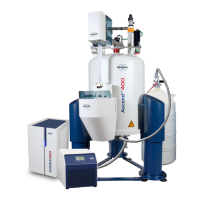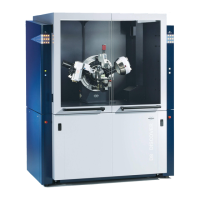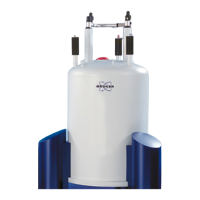The NMR Sample
H171804E_14_001 51 / 86
7 The NMR Sample
When a solid is investigated using the NMR technique, signals tend to be broad and the fine
structure, which is of most interest to scientists, cannot be resolved. Consequently, solid
samples are usually dissolved in a suitable solvent prior to acquisition. The same goes for
liquid samples. In organic solvents, small amounts of a reference compound may be added.
However, to achieve best results the sample should be as pure as possible. Signals from
impurities will at best make the spectrum unnecessarily complicated and worst case mask
genuine signals. Care should be taken to ensure that the sample is free of magnetic
impurities as these can distort the magnetic field and hence degrade the spectrum
resolution. Solid impurities can be most easily removed by filtering. For samples in organic
solvents, dissolved water can be removed as far as possible by thoroughly drying the
sample prior to dissolution.
7.1 Solvent Selection
Once the sample has been sufficiently purified and dried, the next step is to choose a suitable
solvent. Since deuterium is by far the most popular lock nucleus the sample is usually
dissolved in a deuterated solvent (a deuterated solvent is one in which a large proportion,
typically more than 99%, of the hydrogen atoms have been replaced by deuterium).
Commonly used deuterated solvents are benzene-d6, acetone-d6, and chloroform-d,
though many other solvents are available. Factors to be considered when choosing a solvent
are:
1. Solubility: Clearly the more soluble the sample is in the solvent the better. This
maximizes the amount of sample within the sensitive volume which increases the
sensitivity of the experiment. High solubility is particularly important if only small quantities
of the sample are available.
2. Interference of solvent signals with the sample spectrum: The solvent itself will
inevitably produce NMR signals which will obscure regions of the spectrum. These
‘residual solvent peaks’ should not overlap with signals from the sample.
3. Temperature dependence: For experiments above or below room temperature the
solvent‘s melting and boiling points are also important factors. Furthermore the solubility of
the sample is likely to vary with temperature.
4. Viscosity: The lower the solvent viscosity, the better the resolution of the experiment.
5. Cost: Clearly for routine NMR where many samples need to be measured, the solvents
cost is an important consideration. As a rule of thumb, the price increases with the number
of deuterated atoms.
6. Water content: Almost all NMR solvents contain water traces. Also, many are
hygroscopic (they absorb water from the atmosphere) and hence the longer they are
stored the more water they contain. The presence of a water (HDO) peak will only serve to
degrade the quality of NMR spectra. The water level in the solvent can be greatly reduced
by filtration through a drying agent or by storing the solvent by adding molecular sieves.
The choice of solvent for a sample will be the best compromise between the various
advantages and disadvantages of each. Search the web for precise details of specific
solvents.

